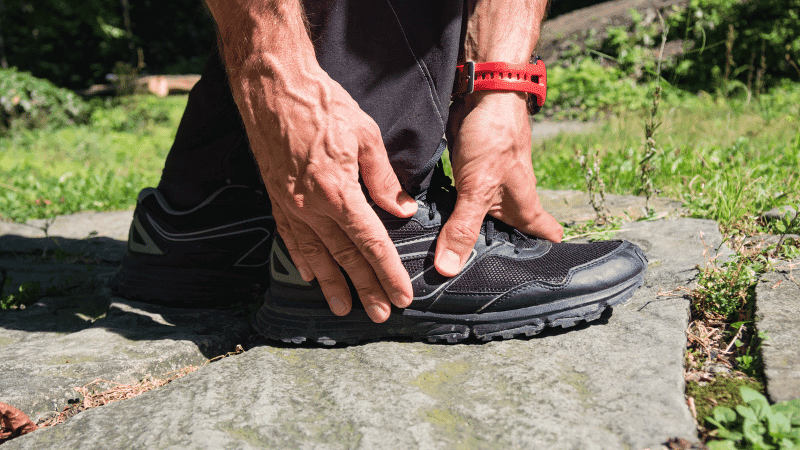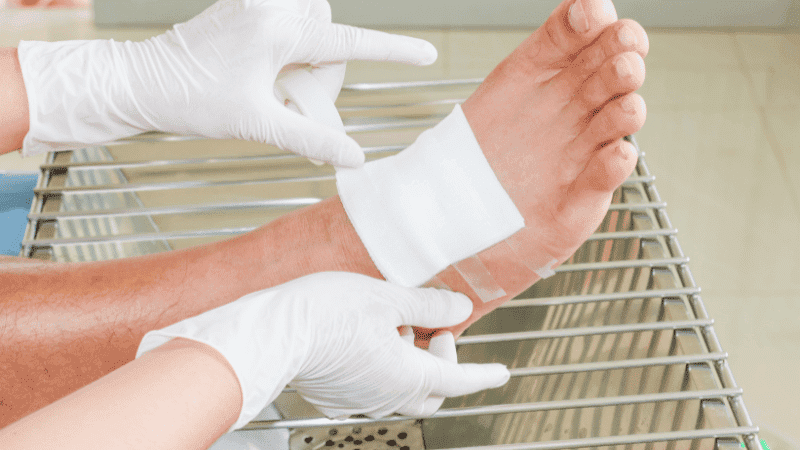The pain and persistent threat of non-healing foot ulcers can significantly impact the quality of life. Often, these ulcers are a direct result of peripheral artery disease (PAD), a condition where narrowed arteries limit blood flow to the legs and feet. This restricted blood flow can lead to slow-healing sores and ulcers on the feet. Understanding the causes of foot ulcers, identifying symptoms, and seeking timely treatment can prevent severe health risks.
What Are Arterial Foot Ulcers?
Foot ulcers are painful, open wounds in the feet that take a long time to heal. In some cases, they may not heal at all. Common causes of foot ulcers include poor circulation, diabetes,, and prolonged pressure from ill-fitting shoes.
When foot ulcers are caused by poor circulation, the skin and tissue in your lower extremities do not receive enough nutrients or oxygen. This can increase the risk of slow-healing wounds and sores. Poor circulation is a common symptom of peripheral artery disease (PAD), which is why PAD is a leading cause of arterial ulcers.
Unlike other foot ulcers, PAD ulcers require specialized vascular treatment to restore blood flow and promote healing. If you are concerned that you may have PAD and are at risk of foot ulcers, the specialists at USA Vascular Centers can help. Schedule a screening with one of our vascular doctors today.
Why Does Peripheral Artery Disease Cause Foot Ulcers?
PAD-related ulcers develop due to restricted circulation, which deprives the skin and tissue of oxygen and essential nutrients.
How PAD Leads to Foot Ulcers
Reduced Blood Flow
Peripheral artery disease restricts oxygen-rich blood from reaching the feet and legs, preventing wounds from healing properly. Even minor injuries, such as small cuts or blisters, can quickly develop into ulcers if not taken care of.
Tissue Damage & Delayed Healing
Skin and tissue break down without enough blood supply, forming painful open sores. PAD ulcers are commonly found on the toes, ankles, feet, and heels, and the discomfort they cause can make it too painful to undertake everyday activities.
How to Treat Peripheral Artery Disease Foot Ulcers
Medical intervention is necessary to restore blood flow in the lower extremities. If you suspect PAD causes your ulcers, schedule a screening with a vascular specialist for an accurate diagnosis. A vascular specialist will identify or assess your ulcers and offer a tailored treatment plan. These treatments can help improve blood flow and lessen the severity of your symptoms.
Non-Surgical PAD Ulcer Treatments at USA Vascular Centers
Ulcers are a serious PAD complication that requires medical treatment. At USA Vascular Centers, we provide non-surgical treatments that can help improve mobility and reduce symptoms. Some options our vascular doctors may recommend include:
- Angioplasty: During an angioplasty, a small balloon opens the arteries and condenses the plaque against the artery walls. This helps improve blood flow and can provide relief from PAD symptoms.
- Angioplasty with stent placement: After an angioplasty, your doctor may recommend placing a stent to keep the affected artery propped open. This can prevent future blockages from forming. Some stents also have slow-releasing medications or a drug-coating.
- Atherectomy: This is a low-risk procedure that only requires a small incision. During the procedure, a blade physically removes plaque from the artery walls to help improve blood flow and reduce symptoms.
Risks of Untreated PAD Foot Ulcers
If you suspect you have PAD foot ulcers, consulting a vascular specialist can provide an accurate diagnosis and treatment plan. If left untreated, PAD ulcers can lead to:
- Infections: PAD ulcer infections can cause severe pain and lead to complications such as gangrene or amputation. If you notice a foul odor, green pus, or swelling in the area, seek medical treatment immediately.
- Tissue Death (Gangrene): A lack of blood, oxygen, and nutrients can lead to tissue death, causing swelling, pain, and skin coloration. Some patients also experience a loss of sensation in the lower extremities. In some severe cases, surgery may be required to remove the dead tissue.
- Amputation Risk: Infected foot ulcers can cause tissue death, bone damage, and severe pain. When left untreated, amputation may be required to prevent the spread of infection.
Call 888.773.2193 to schedule your appointment today.
Are PAD Foot Ulcers Preventable?
To prevent the formation of PAD foot ulcers, you’ll need to be proactive with your health. Eat a nutritious diet, exercise regularly, and maintain healthy blood pressure and cholesterol levels. If you suspect you have PAD ulcers, seek treatment right away. The only way to treat peripheral artery disease ulcers is to make every effort to restore blood flow to the affected area.
Take Control of Your Foot Health At USA Vascular Centers
Whether you’re in the early stages of PAD or facing more advanced complications, our vascular specialists are here to help. Treatment and early intervention can help alleviate symptoms, prevent foot ulcers from worsening, and reduce PAD progression.
USA Vascular Centers specializes in treating all stages of peripheral artery disease with effective, non-surgical procedures designed to restore blood flow and promote healing. Our vascular doctors are here to help create a treatment plan to align with your unique needs. We’ll provide you with expert recommendations based on the severity of your condition.
Schedule a consultation or call us at 888.773.2193 today.
FAQs About PAD Foot Ulcers
Can a PAD foot ulcer heal on its own?
No, most PAD foot ulcers require medical treatment. Lack of proper circulation prevents the ulcer from healing naturally, making medical intervention necessary.
How long do arterial ulcers take to heal?
Depending on the severity of the ulcers, it could take anywhere from a few months to a full year to recover. New tissue growth and a decrease in ulcer size are two signs that your arterial ulcers are healing properly.
How can I tell if a foot ulcer is infected?
Green or yellow pus, swelling, redness, and a warm sensation in the area are signs that your foot ulcer may be infected. Contact a medical professional for a proper examination.




